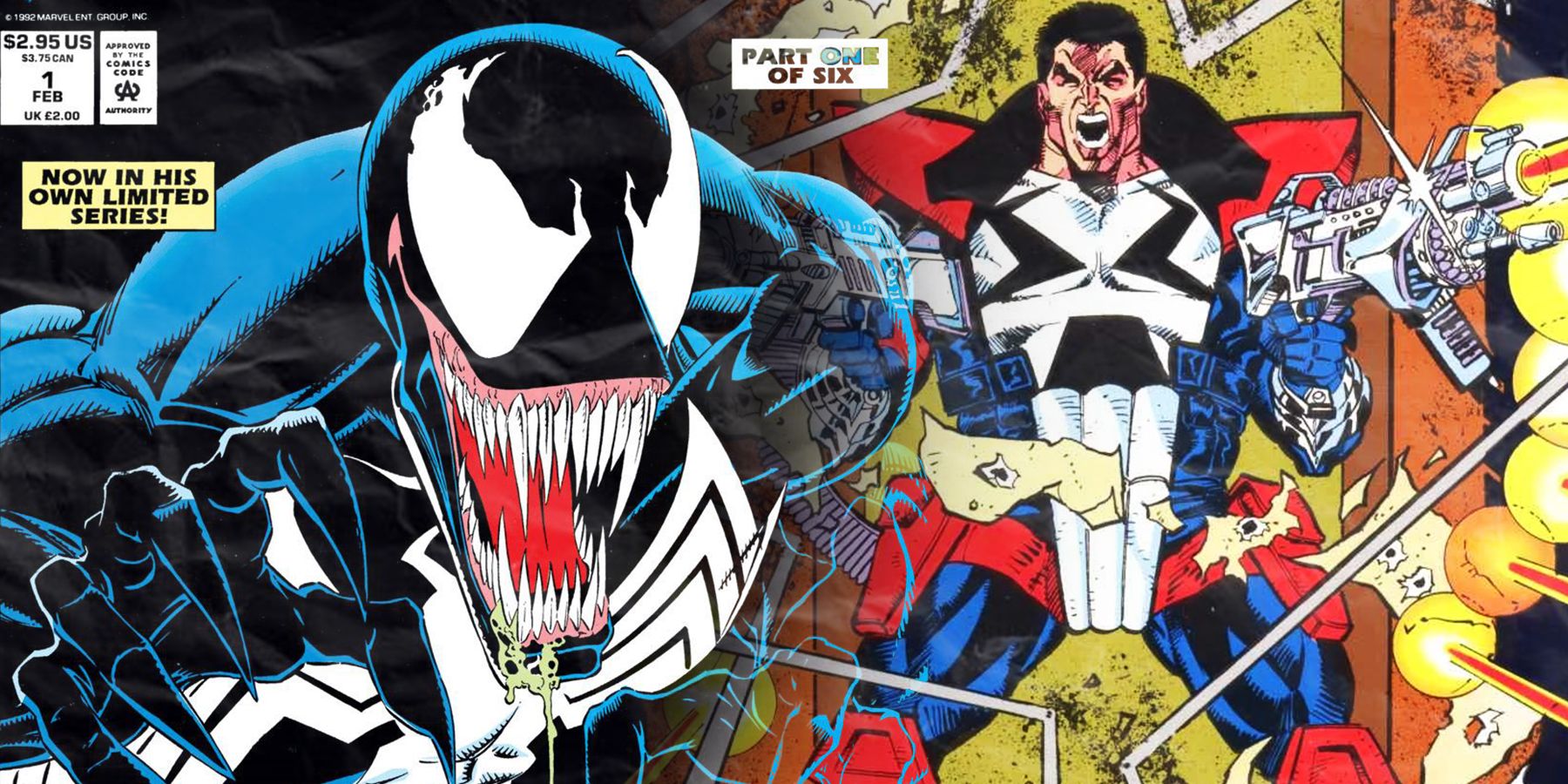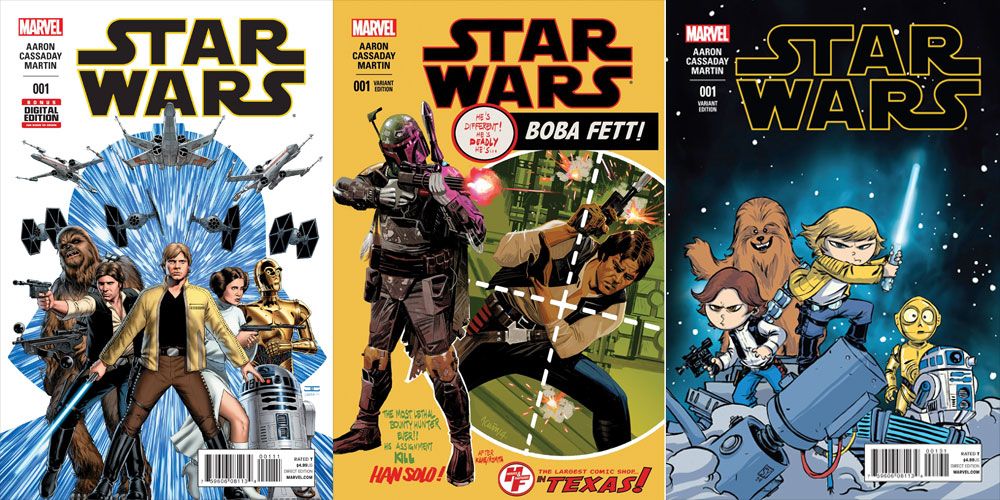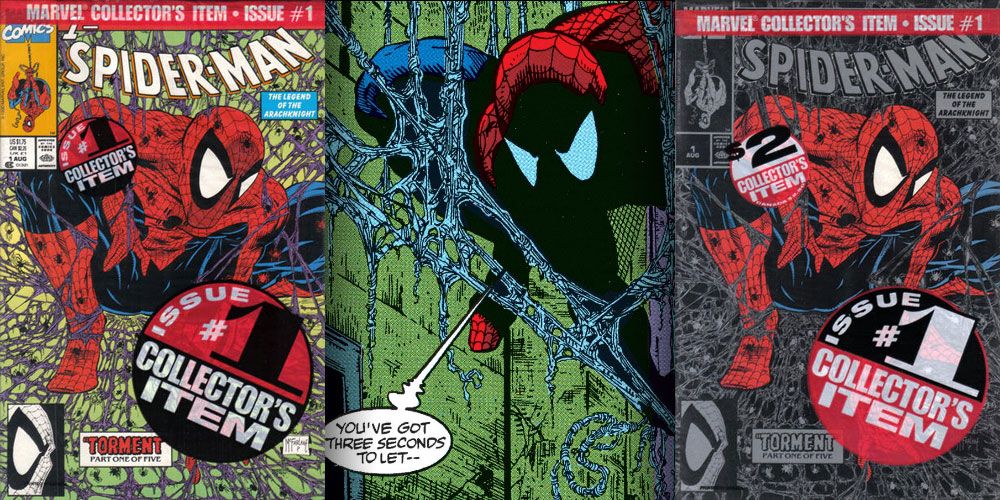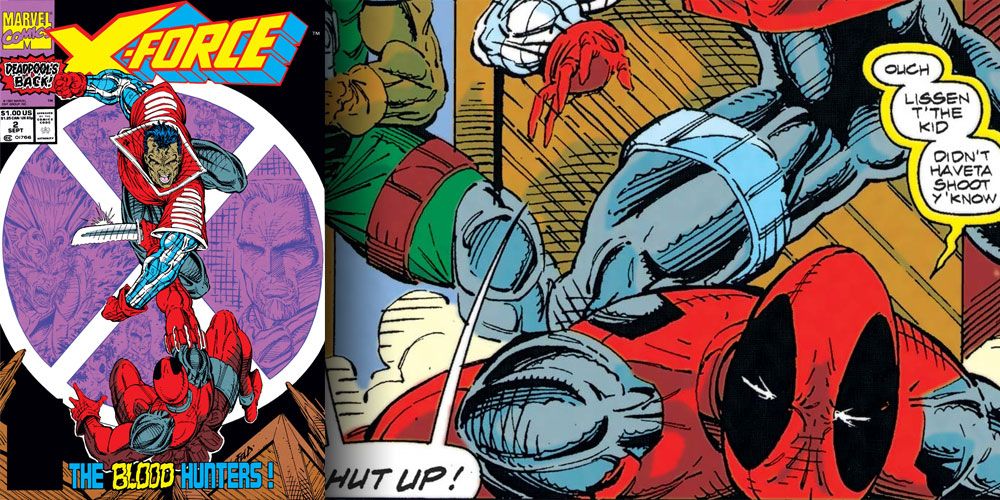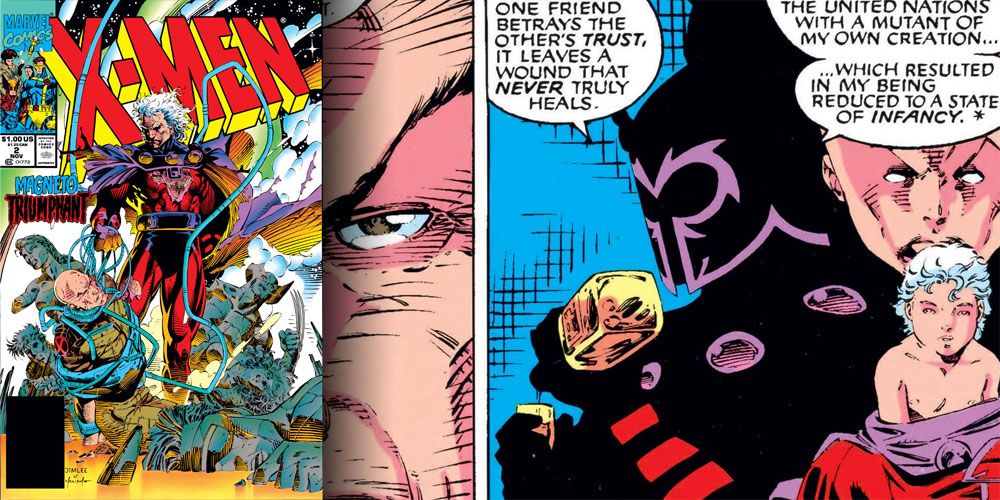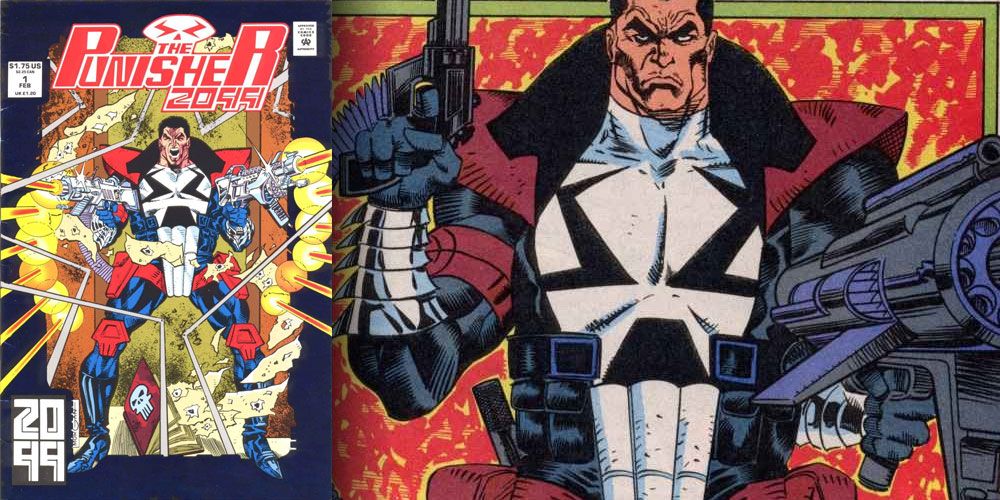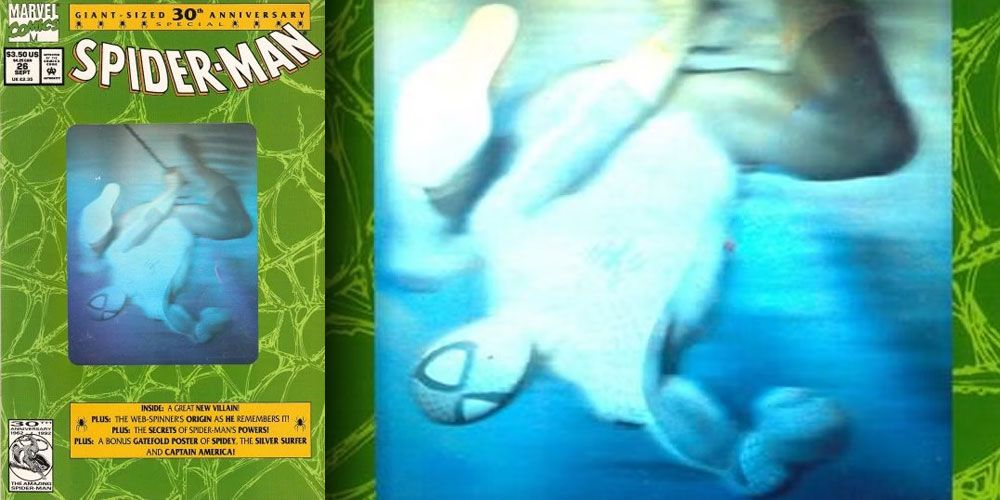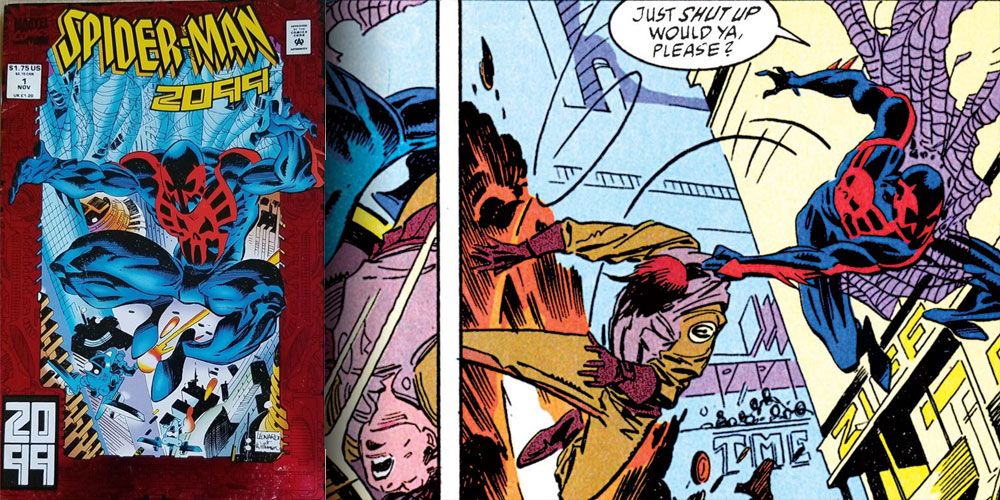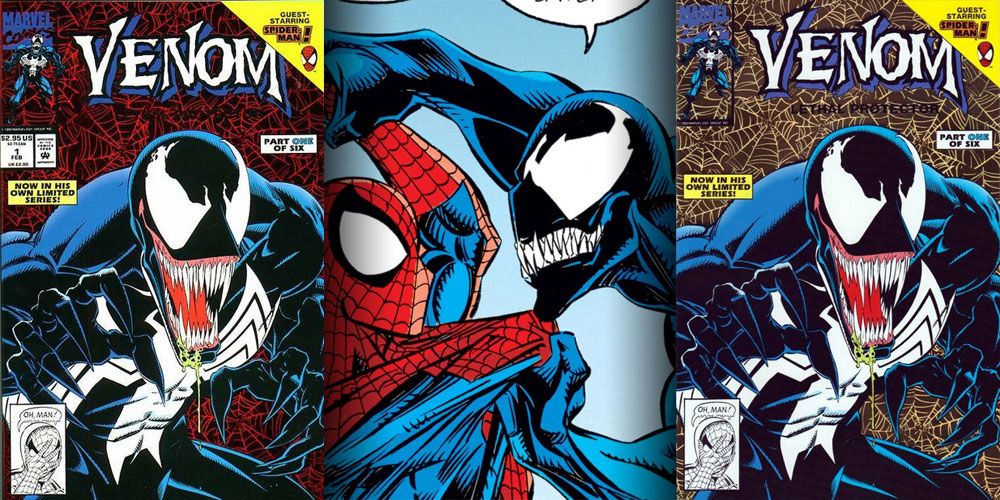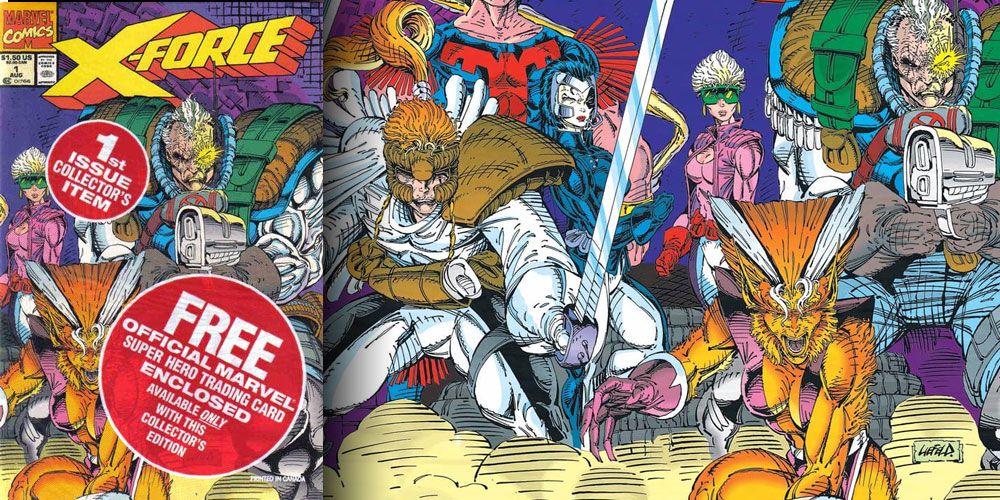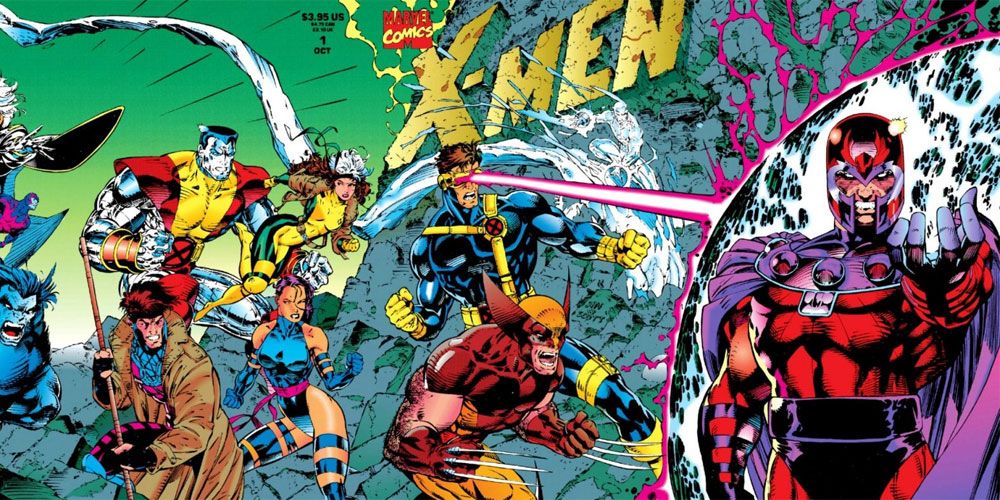The sales of comic books are something that has historically been hard to pin down. Multiple distributors from the very first days of the Golden Age never allowed anyone to determine actual sales numbers, even if they wanted to. During those early years, comic book creators had trouble learning how their books were selling.
In the 1990s, the market for comic books boomed, regularly setting records. When determining the highest-selling comic of all time, some numbers will be approximate, determined by published numbers of other comics. Wherever numbers are available, the bestsellers can be called, and Marvel Comics dominates such a list.
10 Star Wars #1 Is The Best Selling Comic Of The Modern Age
(2015) 1,073,000 Copies
In 2015, Marvel Comics got the comic book license back from Dark Horse. Three years earlier, Disney added Lucasfilm to its family. Disney purchased Marvel Comics in 2009. As soon as the ink dried, fans waited for the new Marvel Star Wars comic.
Marvel responded in January, releasing a new Star Wars #1 by Jason Aaron, John Cassady, Laura Martin, and Chris Eliopoulos. They also released it with no less than seventy variant covers, which ensured that many fans bought multiple copies. There was also a large order from online reseller Loot Crate, further bolstering the numbers.
9 Spider-Man #1 Started The Boom Of The 1990s
(1990)1,325,000 Copies (Unofficial)
The first polybagged comic to start a trend was Spider-Man #1 by Todd McFarlane. It also didn't hurt that there were cover variations based on the color of ink used for the background. Not all variations were polybagged.
In retrospect, the weirdest part of polybagging is the reason for the polybag. There's nothing with the comic that the bag keeps with it. Its primary purpose is to add hype to the issue on the stands. On the silver edition of the comic, the bag also advertised a two-dollar price point, twenty-five cents over the price of the regular edition.
8 X-Force #2 Featured Deadpool's Return
(1991) 1.4 Million Copies (Per Rob Liefeld)
How would an artist top setting the record for the best-selling comic of all time? The second issue featuring a new and popular character is a good start. Rob Liefeld showed with X-Force #2 that he knew how to sell a comic book. On Twitter, the creator stated the issue sold 1.4 million copies.
Deadpool is one of the most popular characters at Marvel Comics. This issue featured a long battle between the Merc with a Mouth and a new character, Garrison Kane, the new Weapon X. The fight is intense but shows Deadpool as fans have come to know him.
7 X-Men #2 Proves The First Issue Sales Weren't A Fluke.
(1991)1.5 - 1.8 Million Comics (Estimated)
The numbers for each cover of X-Men #1 have been broken down per alternate cover. With sales for X-Men #2 falling between two of those editions, that firmly puts it on the list of best-selling Marvel comic books. With X-Men #1 dominating the coverage of best-selling comics, it's easy to overlook the follow-up issue.
One should note that X-Men #2 had no polybag, silver or gold ink, or variant covers aside from a newsstand edition. This comic sold well based on the strength of the two primary creators, Jim Lee and Chris Claremont. It's a trend that would continue through 1992, even after Jim Lee took over writing the comic.
6 Punisher 2099 #1 Showed The Anticipation For Marvel 2099
(1992) over 1.7 million copies(Unofficial)
Marvel's 2099 line was a massive success when it first launched. The first issue of each series in the initial launch featured metallic ink on the cover. Two of those four comics sold more copies than Spawn #1, which sold 1.7 million copies.
1992 might have been the peak of the comic industry's 1990s boom. While everyone remembers Superman #75 and Spawn #1, there are five comics from Marvel between those two books. It might surprise fans that Punisher 2099 is one of them, given that the title was canceled three years later.
5 Spider-Man #26 Featured A Holographic Cover
(1992) over 1.7 million copies(Unofficial)
The hologram cover gimmick was another method Marvel tried in the 1990s. The 30th-anniversary issues of each Spider-Man title featured a holographic image of Spider-Man on the cover. It was a practice that Marvel would employ again for the X-Men the following year.
1992 would be the last year of the massive speculator boom for comic books. The first cracks started appearing in the next year as comic shops began to default on their accounts with distributors. This would eventually see the market shrink until only one distributor controlled the market, and Marvel Comics would file for bankruptcy.
4 Spider-Man 2099 #1
(1992) Over 1.7 million copies(Unofficial)
The sales for Spider-Man 2099 #1 are determined by the 1992 sales charts and the stated sales of Spawn #1. It was also the first and best-selling title of Marvel's 2099 line. Its sales, even at its cancelation four years later, were over 100,000 copies per issue.
Other comics in the 2099 line dragged down this popular comic. Peter David was an excellent writer for a new Spider-Man set in a much bleaker future. The character survived being canceled into the present day, being adapted for Across the Spider-Verse.
3 Venom: Lethal Protector #1
(1992) Over 1.7 million copies(Unofficial)
Because of the plethora of distributors at the time, it's hard to determine how many copies of Venom: Lethal Protector #1 sold in late 1992 and early 1993. It was the third-highest-selling comic of 1992, and the seventh comic, Spawn #1, sold 1.7 million copies. It's possible that Venom's first solo comic sold more than two million copies.
The cover featured an iconic portrait of the title character. It also featured a red foil cover enhancement in a web pattern behind Venom. Marvel also released a version with gold foil. The demand from collectors seemed genuine, driving the comic to be a top seller as 1992 ended.
2 X-Force #1 Held The Record For Two Months.
(1991) 5,000,000 copies (Unofficial, but accepted)
When Rob Liefeld came onto New Mutants, he turned the book into one of the best-selling titles at Marvel within just a few months. When the title was transformed into X-Force, it was drawn and written by Liefeld, with a writing assist by Fabian Nicieza. The demand was expected to be high, and it shattered records.
Marvel responded by duplicating the polybag gimmick used on Spider-Man #1. The decision was made to give the polybag a reason and include one of five trading cards with each issue, visible on the back of the comic. Fans and collectors bought multiple copies to get all five cards, propelling X-Force #1 to being the highest-selling comic of all time until X-Men #1 was released.
1 X-Men #1 Is The All-Time Leader
(1991) 8,186,500 copies
No comic may ever break the record of X-Men #1. Marvel Comics turned the release into a month-long event, something DC Comics did previously with Legends of the Dark Knight #1. Each week's issue had the next part of an interconnecting cover image. The fifth week had a double-gatefold cover combining all covers with some slight alterations.
Sales were so high for this comic that it dominated the market for August. While the rollout was designed for fans to buy multiple copies, it was done so they would buy each of the five cover variants. Collectors, firmly dominating the market, purchased several copies of each cover, driving the sales to unheard-of levels. It's hard to imagine the market ever returning to this level of excitement.

